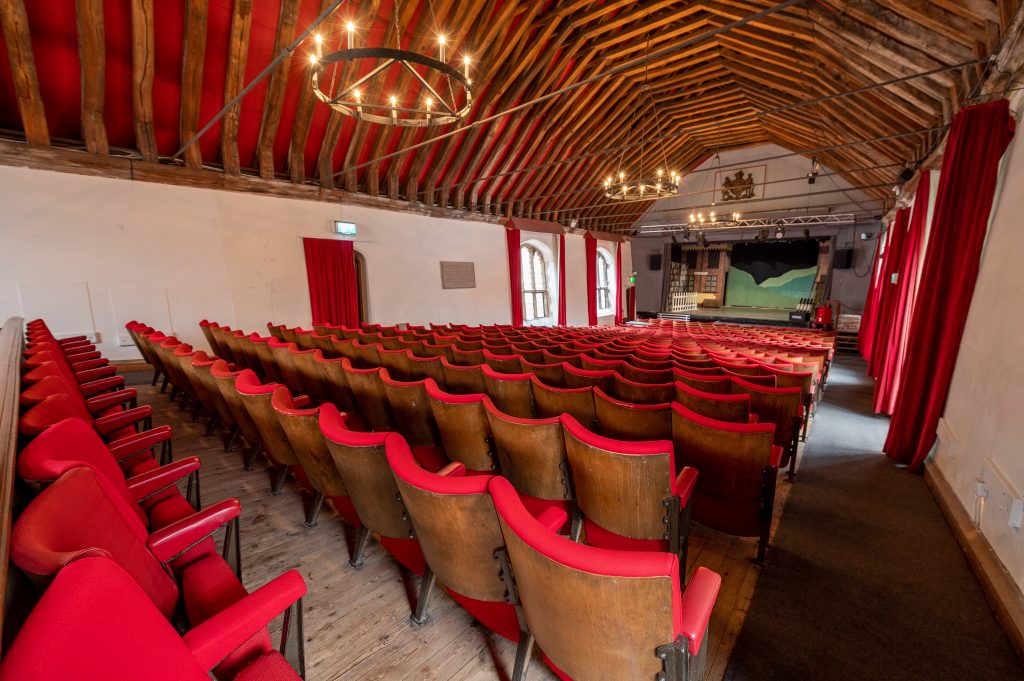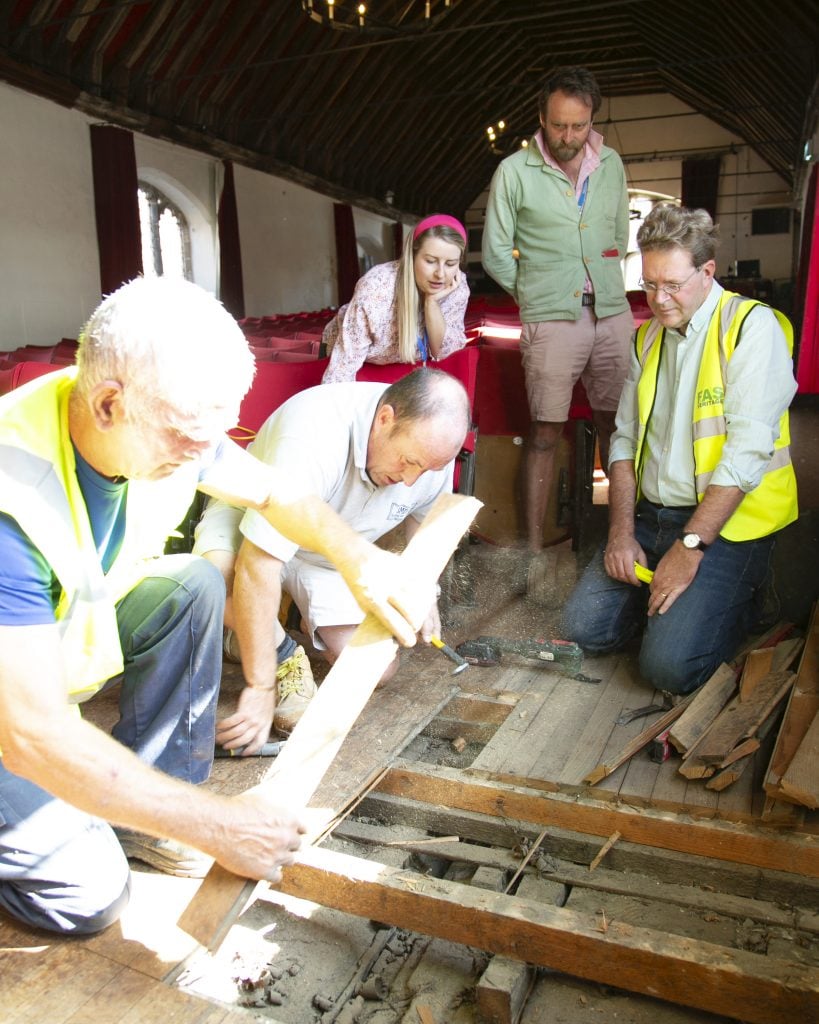Archaeology & History
Zounds! A Renovation at a U.K. Theater Uncovers 600-Year-Old Floorboards Believed to Have Been Trod on by Shakespeare
The Bard himself performed at the venue in the 1590s.

The Bard himself performed at the venue in the 1590s.

Max Berlinger

All the world may be a stage, as Shakespeare once famously said, but a recent discovery may have yielded the most famous stage yet: literal theater floorboards dating back to the Elizabethan age which are believed to have been trod upon by none other than the Bard himself.
The discovery was made at St. George’s Guildhall in Norfolk during a renovation of the venue, reported The Guardian. The 600-year-old oak planks were located underneath ones put down in the 1950s, and another layer believed to have been laid in the 18th or 19th century. They are 12 inches in width, about six inches thick, and held together, in lieu of nails, with wooden pegs.
“Experts are now confidently saying these are the floorboards Shakespeare would have trodden,” Tim FitzHigham, the guildhall’s creative director, told the paper. “It makes this building important nationally and internationally.”
While the building began life as a religious meeting house, as confirmed by a Royal Charter in 1406, it hosted its first theatrical performance in 1445.
Several pieces of evidence suggest that the Bard himself performed at the venue. London theaters were closed due to an outbreak of plague in 1592–93, and records indicate that Shakespeare’s company was on tour in King’s Lynn. An account book shows that his company was paid to perform there.

The discovery of Elizabethan theater floorboards used by Shakespeare at St. George’s Guildhall, courtesy of West Norfolk Council.
“It is very unusual to have so much of the original floor surviving,” said Jonathan Clark, the archaeologist who oversaw the project. “Usually you might have beams and joists but the actual flooring has usually been replaced.” Clark said this is the greatest expanse of medieval timber flooring in the country, and that it survived because it’s so integral to the structure that it would have been difficult to remove it without demolishing the building.
“We can date the flooring by the construction type,” he added. “These boards are pegged to secure them, which is a medieval technique.
“We also had some sampling done, which provided us with a tree ring date from the growth rings in the timber and it is an early 15th-century floor.”
More Trending Stories:
Four ‘Excellently Preserved’ Ancient Roman Swords Have Been Found in the Judean Desert